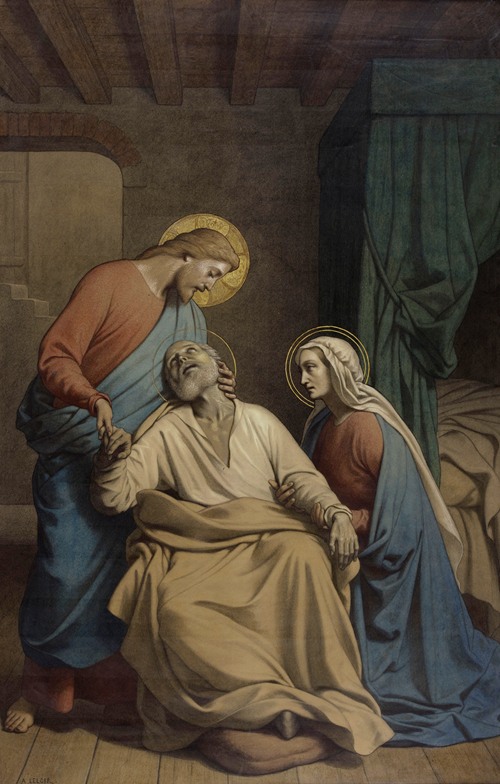
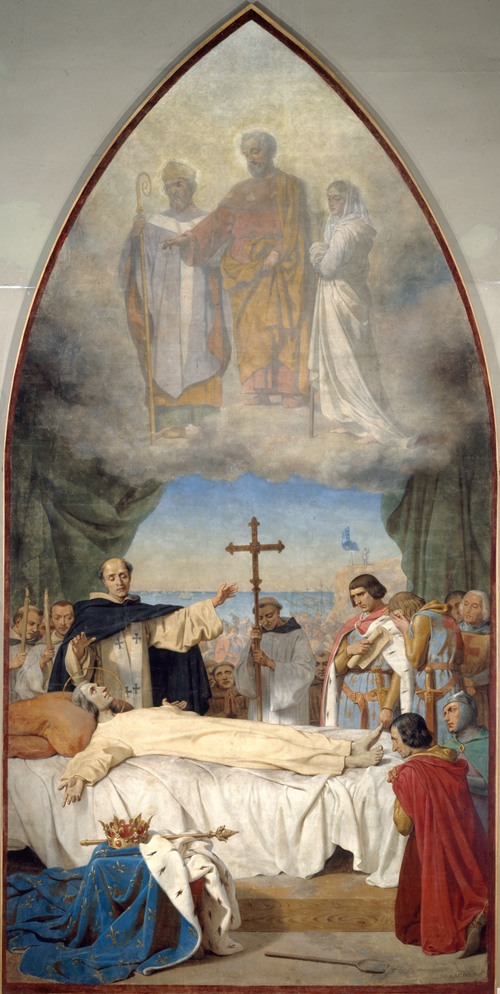
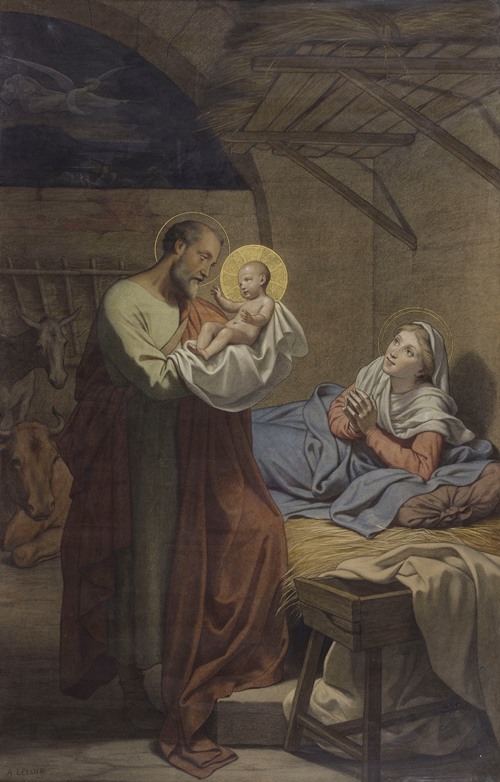
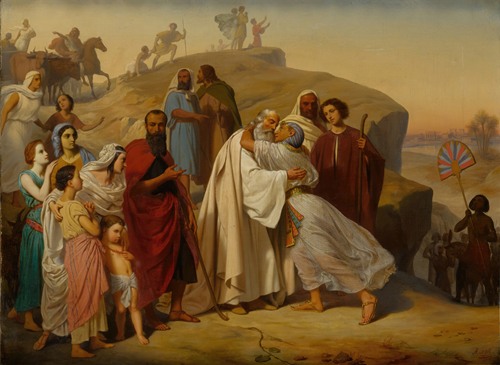
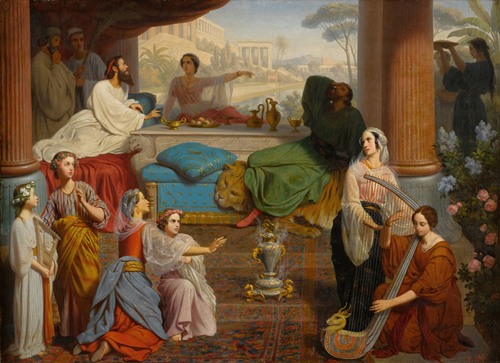
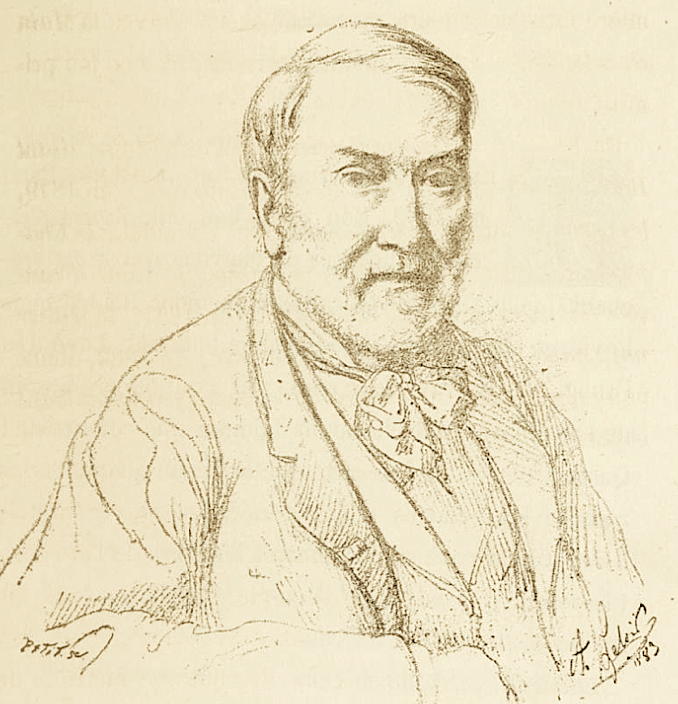

Jean-Baptiste Auguste Leloir was a French painter .
Pillar of a dynasty of painters, Auguste Leloir is the husband of the watercolor artist Héloïse Colin (1820-1874), the father of the painter Alexandre-Louis Leloir and the illustrator Maurice Leloir, and the uncle of Édouard Toudouze.
Crowned with a 3rd Grand Prix of Rome in 1835, Auguste Leloir began exhibiting at the Salon the same year and was rewarded twice, obtaining a third class medal at the Salon of 1839, then a second class medal at the Salon of 1841 for his painting representing Homère, bought by the State and deposited at the Louvre Museum . He produced a work of history painter, author of paintings about religious and mythological. he also practices portraiture .




